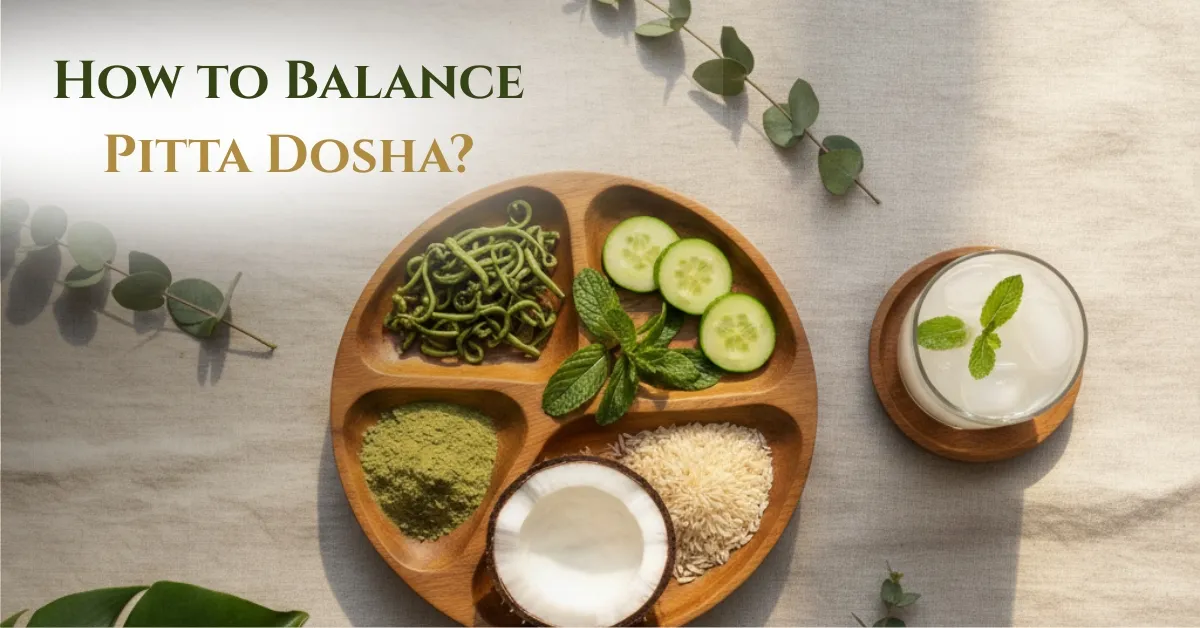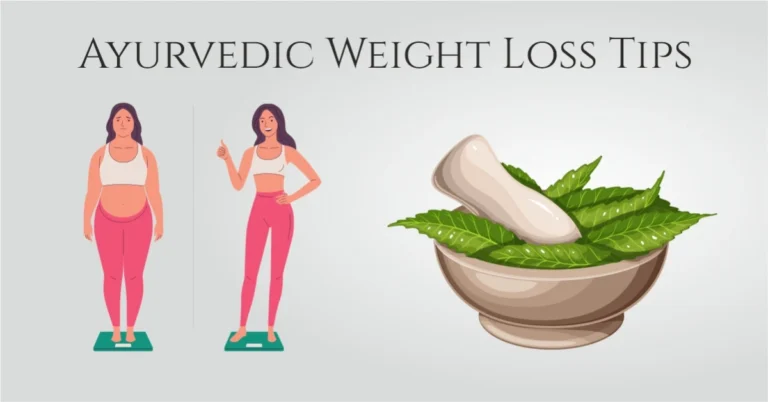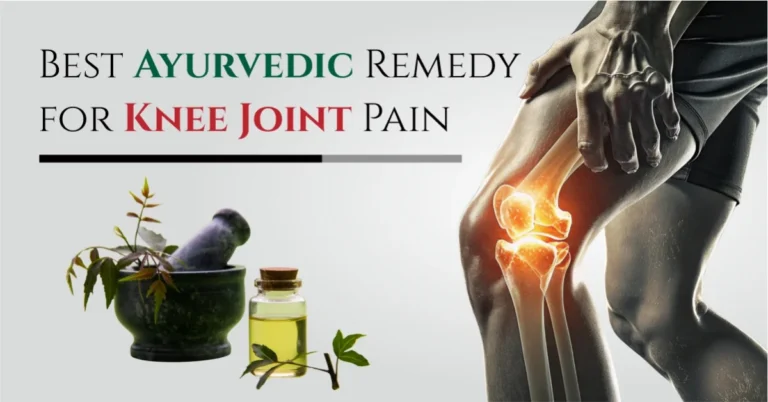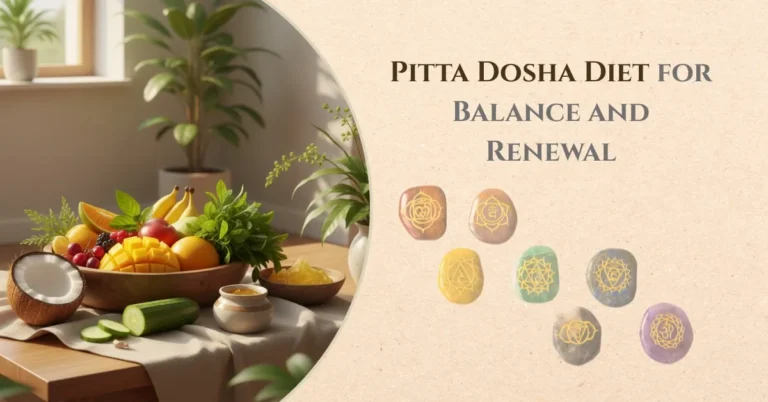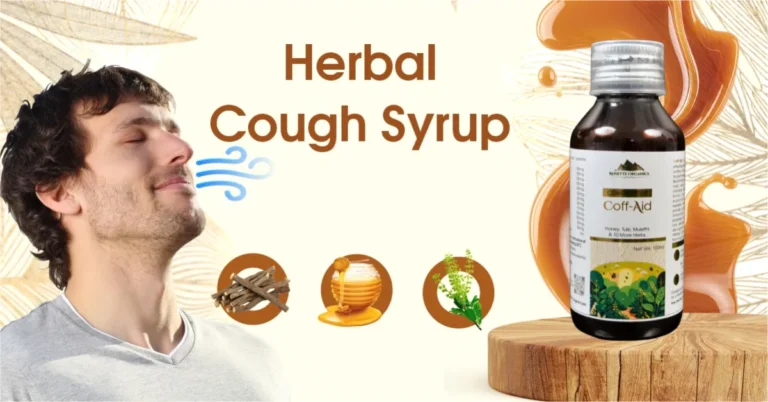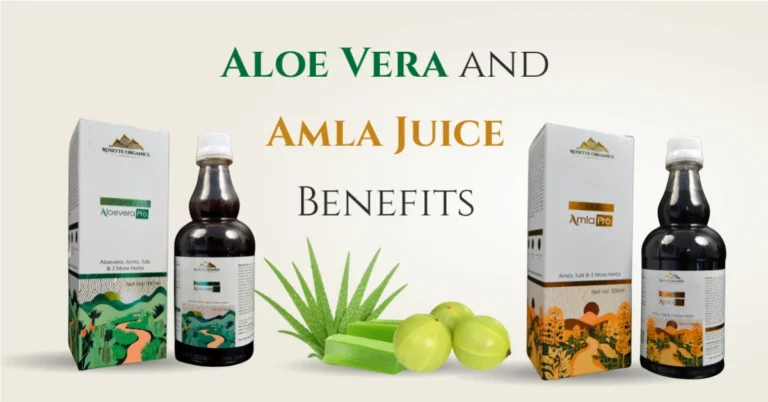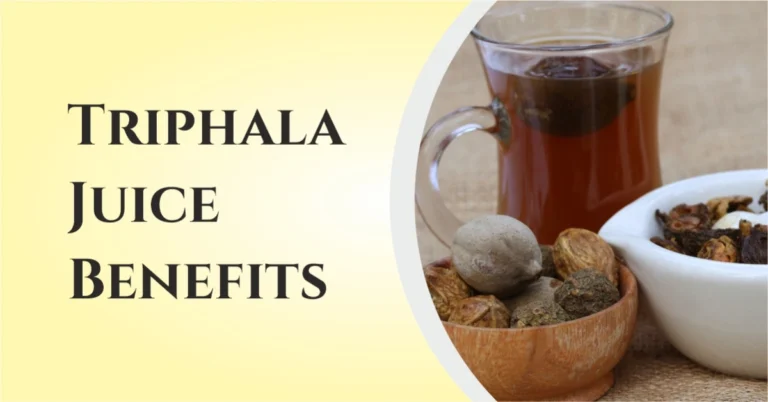How to Balance Pitta Dosha?
In Ayurveda, Pitta is the Dosha that embodies the qualities of heat, fire, and a subtle aspect of water, driving transformation in the body and mind. It fuels digestion, metabolism, and the Agni—the inner fire of the body that governs how we process food and experiences.
Its nature is pungent, light, hot, sharp, acidic, intense, and penetrating, shaping our sensory perceptions, moral sense of right and wrong, and our ability to understand and respond with clarity.
Role of Pitta in Health & Disease
A balanced Pitta principle sustains smooth digestive processes, efficient assimilation of food, steady body temperature, and a sharp yet calm thinking mind. It supports healthy skin colour, maintains functions of the small intestine, stomach, liver, gallbladder, spleen, heart, blood, eyes, and even the grey matter that sharpens mental judgment.
When aggravated, it may spark impatience, irritability, anger, hostility, or jealousy, and manifest as elevated temperature, heartburn, gastric hyperacidity, stomach ulcers, skin problems like eczema, eye pain, or even liver and gallbladder disease.
People with a strong Pitta often appear medium-tall, athletic, with warm skin, sometimes ruddy, prone to freckles, acne, premature greying, and marked by intelligent, rational, pragmatic, competitive traits, often with strong willpower, responsibility, and authority.
Signs You Might Have Dominant Pitta Constitution
If you have a naturally dominant Pitta constitution, you may notice a steady appetite, quick digestion, a medium build with good muscle tone, warm skin, or recurring rashes and acne.
Many show fine, sometimes straight hair, often prematurely greying, and carry a distinct fiery aura in their ambitious, responsive, and egoistic tendencies. Such individuals tend to have a sharp mind, a rational, pragmatic outlook, high metabolism, and a determined strong will, yet can become easily irritated or impatient in challenging situations.
Recognizing Pitta Imbalance
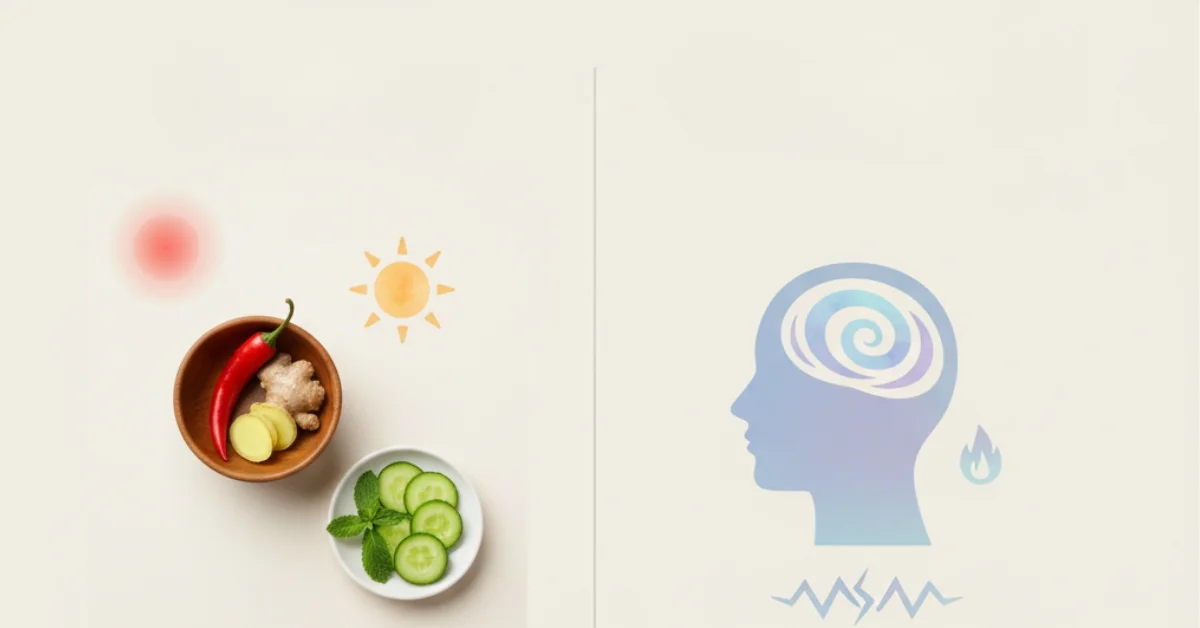
Physical Symptoms
Aggravated Pitta often causes burning sensations in the stomach, chest, heartburn, acid reflux, sour belching, loose stools, or bloating.
The skin may get inflamed with acne, redness, rashes, eczema, hives, or urticaria, along with excessive sweating, thermal signs, intolerance to sun, hot flashes, dry itchy skin, and sometimes early greying, thinning hair, freckles, rosacea, migraine, ulcers, red bloodshot eyes, nausea, vertigo, arthritis, infections, or bleeding disorders.
- Burning sensation, heartburn, acid reflux, sour belching, bloating
- Redness, rashes, eczema, urticaria, inflammation of gums
- Excessive sweating, intolerance to sun, thermal signs, hot flashes
- Early greying, thinning hair, rosacea, dry itchy skin
- Migraine, ulcers, red bloodshot eyes, fever, arthritis, nausea, vertigo
Emotional & Behavioral Symptoms
An aggravated Pitta may bring impatience, irritability, restlessness, emotional fluctuations, stress, and anxiety. It can lead to a judgmental attitude, sharp criticism, over self-critical thoughts, perfectionist tendencies, competitiveness, egoism, pride, resentment, and sometimes aggression, hostility, destructive tendencies, or violent behaviors, which can result in burnout and emotional instability.
- Irritable, impatient, frustration, stress, restlessness
- Judgmental attitude, sharp criticism, overly critical, perfectionist tendencies
- Competitiveness, egoism, pride, inflated ego, resentment
- Aggression, hostility, burnout, violent behaviors, emotional instability
Early Warning vs. Chronic Pitta Issues
Early detection helps prevent disorders and reduce flare-ups. Triggers include dietary factors like chilli, cayenne, fermented foods, alcohol, red meat, aged cheese, deep-fried foods, coffee, and environmental heat such as high summer, midday sun, saunas, furnaces, or computer servers.
Stress from lifestyle pressures, tight deadlines, competitive sports, excessive screen time, or a tense emotional climate with heated debates, constant criticism, and unresolved anger can worsen the condition.
- Acute inflammation, overheating, flare-ups, emotional climate stress
- Chronic digestive problems, persistent skin issues, long-term acid reflux
- Repeated infections, burnout, chronic stress, long-lasting irritability
- Disease progression when triggers and early detection are ignored
Common Triggers of Pitta Aggravation
Dietary Triggers
- Spicy foods, pungent foods, sour foods, salty foods increase internal heat.
- Fermented foods, deep-fried foods, red meat, processed food, alcohol, caffeine, black tea, nicotine disturb digestion.
- Overuse of oily foods, hot foods, fried foods, sugar, white sugar, honey, salted butter, heavy meals, fast food, carbonated drinks overheats the body.
- Acidic fruits like tomatoes, along with garlic, onions, ginger, vinegar, and pickles further aggravate Pitta.
Lifestyle Triggers
- Prolonged excessive sun exposure, heated rooms, frequent hot baths, sauna increase body heat.
- Engaging in intense physical activity, strenuous exercise, competitive sports without proper cooling leads to imbalance.
- Continuous overworking, lack of rest, poor sleep, and irregular eating habits stress the system.
- Common habits like excessive screen time, a stressful work environment, late-night activities, prolonged standing, smoking, or staying in noisy environments further aggravate Pitta.
Emotional & Seasonal Triggers
- Persistent anger, frustration, jealousy, impatience, irritability, and ongoing emotional stress, overthinking, anxiety, resentment, perfectionism, emotional intensity fuel inner heat.
- The summer season, prolonged heat waves, midday sun, dry heat, humid heat worsen symptoms.
- Sudden weather changes, hot winds, climate change, and seasonal variation further trigger Pitta aggravation.
For a deeper look at what sparks Pitta imbalance, see our guide.
Ayurvedic Diet for Balancing Pitta
Cooling & Soothing Foods to Include
To cool the natural heat of Pitta, focus on sweet fruits like ripe mangoes, pears, and melons, which calm the body. Hydrating vegetables such as cucumber and herbs like mint offer instant soothing relief.
Cooking with a little ghee instead of heavy oils supports digestion without adding extra heat. Light grains like basmati rice and coconut-based dishes—using coconut water, fresh coconut, or mild coconut milk—help cool internal fire while nourishing the tissues.
Foods & Drinks to Avoid
To keep Pitta in check, cut back on hot spices such as chili, black pepper, and mustard seeds, as they increase internal heat. Avoid fried food, sour citrus fruits like lemons and grapefruits, and minimize alcohol and caffeinated drinks such as coffee or strong black tea, which often overstimulate digestion and aggravate acidity.
It is also best to reduce pickles, vinegar-heavy foods, and overly salty or oily snacks that make the body feel heavier and hotter.
Seasonal Adjustments for Pitta Diet
During summer and in hot climates, Pitta needs special attention. Opt for meals that are light, fresh, and hydrating. Prioritize cooling foods like juicy seasonal fruits, salads with cucumber, tender leafy greens, mild spices like coriander and fennel, and drink plenty of room-temperature or slightly cool water.
Limit intake of hot soups, spicy curries, or strong stimulants, especially during midday heat. In cooler months, you can include slightly warming foods but avoid going overboard with heavy spices or oily meals.
Sample One-Day Pitta-Friendly Meal Plan
- Morning: A bowl of sweet fruits such as ripe pears and melons with a drizzle of coconut water.
- Lunch: Lightly cooked basmati rice with steamed cucumber, carrots, and beans, served with a spoon of ghee and garnished with fresh mint.
- Snack: A glass of cool coconut water or tender coconut with a handful of soaked raisins.
- Dinner: A soft rice porridge or lightly spiced vegetable soup with fennel and coriander, paired with steamed greens.
FAQs
What is the recommended dosage of common Pitta-balancing herbs like Amalaki and Guduchi?
Amalaki: 1–3 g powder or 1–2 tsp juice daily; Guduchi: 300–500 mg capsule or 3–5 ml liquid extract, as advised by an Ayurvedic expert.
What are the possible side effects of Pitta-balancing herbs?
Overuse may cause mild bloating, loose stools, nausea, or digestive discomfort; usually safe in recommended doses.
How does Pitta imbalance affect menstrual health and hormonal cycles?
It can lead to heavy, painful periods, mood swings, acne, and heat sensations; balancing Pitta often eases these issues.
What Ayurvedic herbs are best for balancing Pitta dosha?
Key herbs include Amalaki, Guduchi, Neem, Shatavari, Brahmi, and Licorice for cooling and calming effects.
How does Ayurveda suggest balancing Pitta through diet and lifestyle?
Eat cooling foods like sweet fruits, cucumber, coconut, follow regular meals, proper sleep, gentle yoga, and avoid heat and spicy foods.
What are the common forms of Pitta-balancing Ayurvedic supplements available?
They come as powders, capsules, tablets, and syrups; capsules and syrups are more convenient for daily use.
Can balancing Pitta dosha help reduce anger and emotional imbalance?
Yes, balancing Pitta reduces anger, irritability, and supports calmer emotional responses.
Are there different forms of Pitta-balancing supplements (powder, capsule, syrup) and which is most effective?
All are effective; powders absorb faster, capsules ensure consistent doses, syrups are easier for those who dislike powders.
Can Pitta-balancing herbs interact with medications?
Some may interact with digestion, blood sugar, or immunity medicines; always consult a doctor before combining them.

